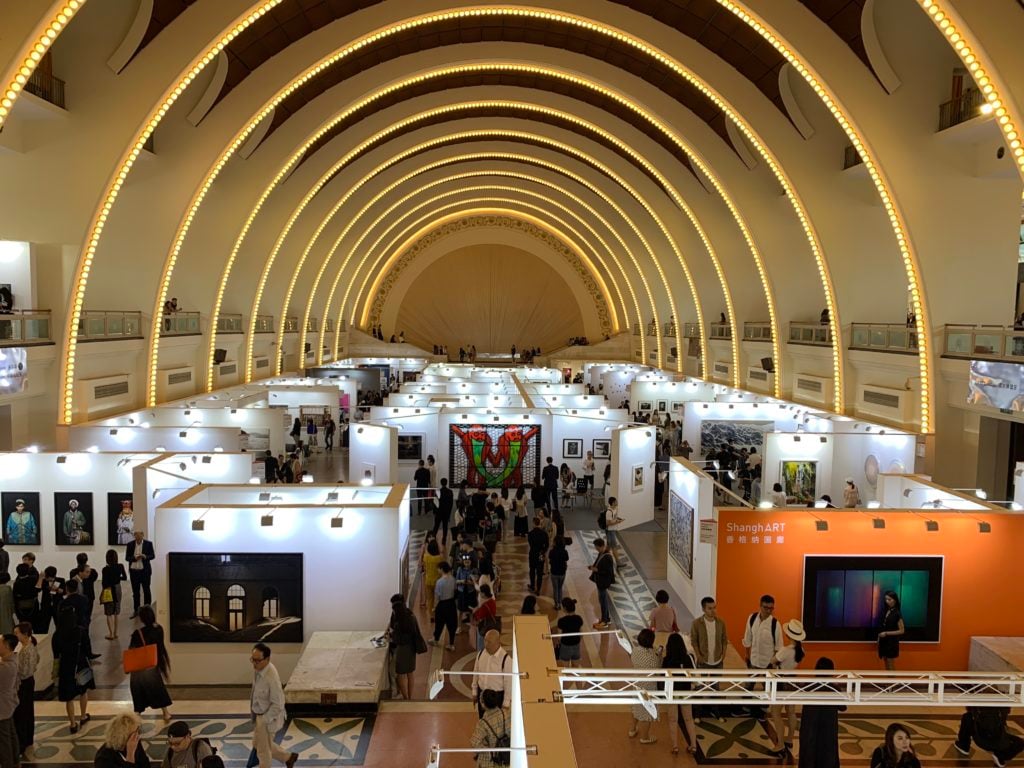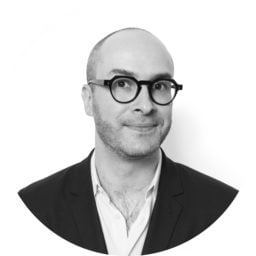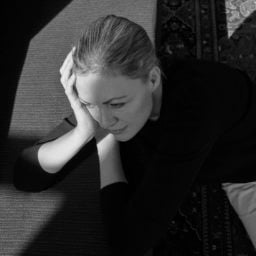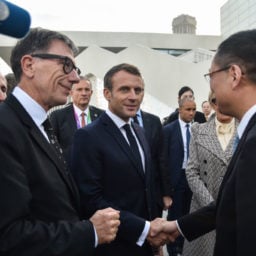The Shanghai Exhibition Center is located in a vast complex that was inaugurated in 1955 as the Sino-Soviet Friendship Building, and last week, the artworks assembled there for the latest edition of Photofairs Shanghai likewise told a rich, multilayered, and sprawling story about palimpsestic nature of China’s recent cultural history. With dealers attending from across the region and the rest of the world—including Western powerhouses like Thaddaeus Ropac, Sean Kelly, and New York’s groundbreaking Bitforms Gallery—it also told a tale of the contiguous narratives of a broad spectrum of people that are becoming increasingly interwoven in our globalizing world. There was much to learn, and much to admire. Here are some of the more eye-opening works on display.
Cai Dongdong
A Hundred Years (2019)
Leo Gallery – Shanghai, Hong Kong
Price: $81,785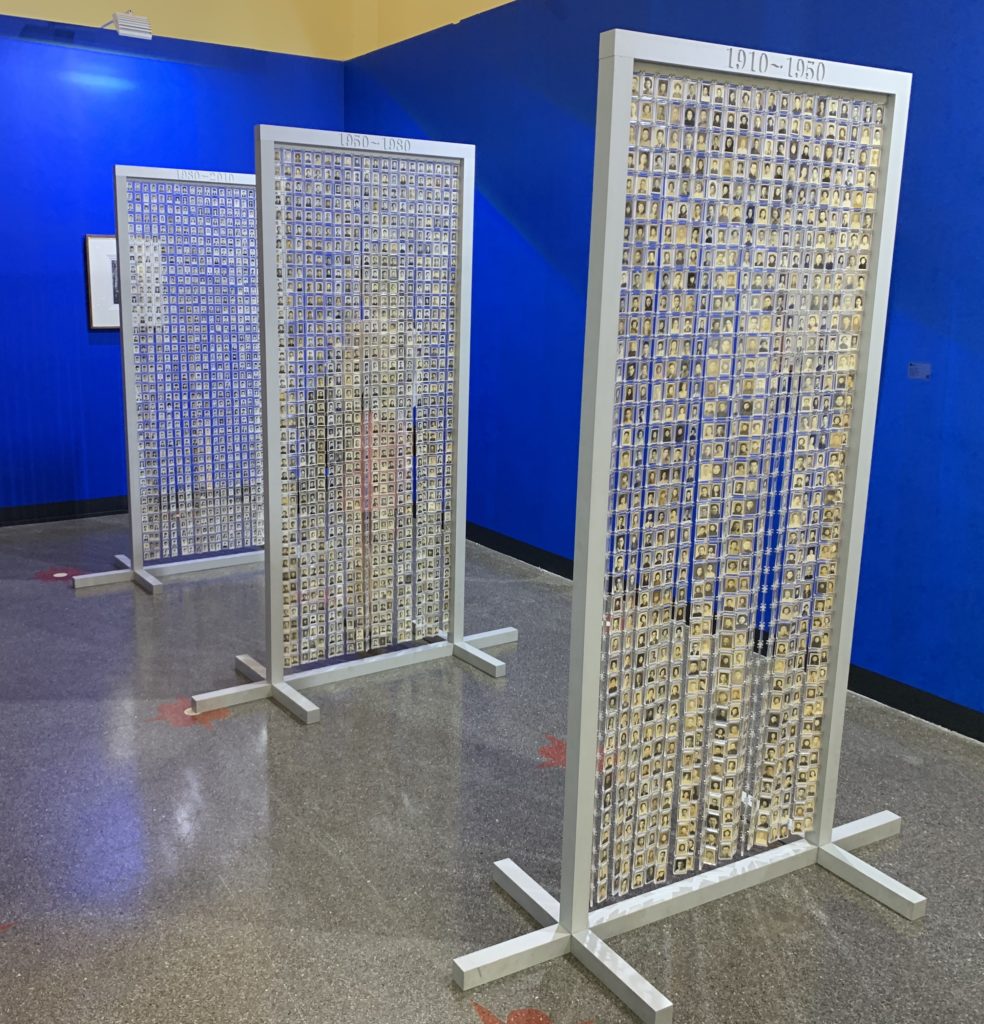
China’s breathtaking political and cultural changes over the past century are captured intimately in Cai Dongdong’s A Hundred Years, an installation featuring three doors that are each strung with 780 portraits of Chinese people, first from the years 1910 to 1950, then 1950 to 1980, then 1980 to 2010. Each door tells an epic story. Approaching the work, one sees a mix of men and women alternately wearing mandarin collars and cheongsam, respectively, or European-style formalwear—a stylistic variance that captures the complex era, which spans the establishment of the Western-leaning Republic of China in 1912 to the birth of the communist party to civil war to the Second Sino-Japanese war and, ultimately, to Mao’s rise to power as the head of the People’s Republic of China in 1949.
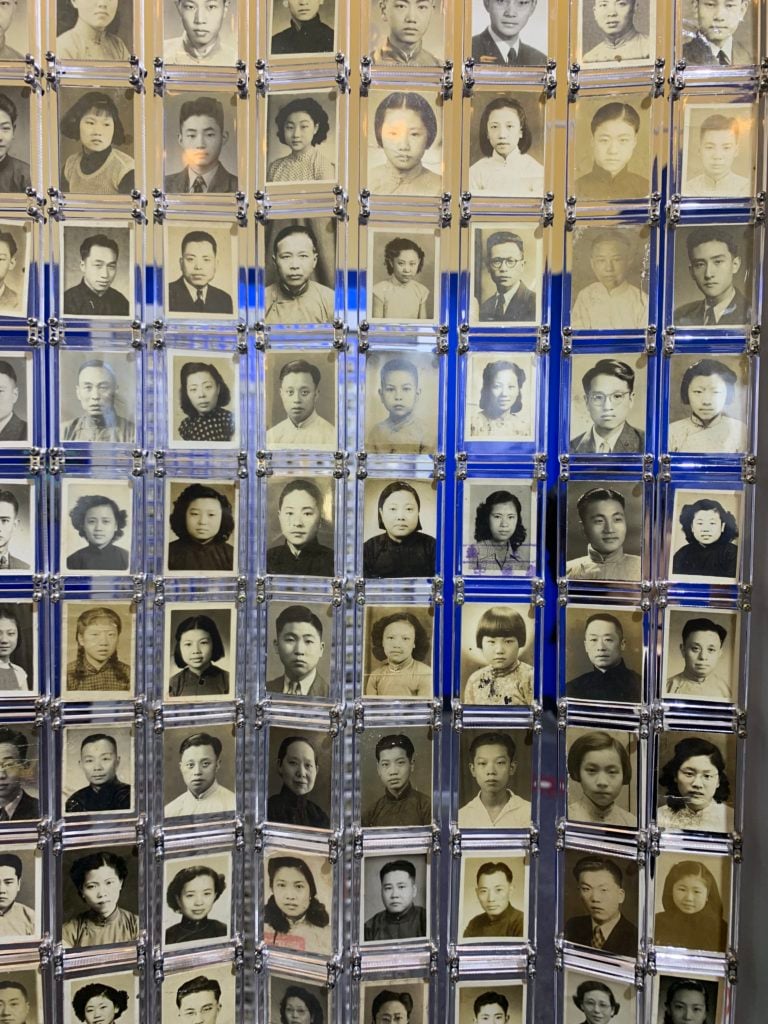
The years 1910-1950.
The second door, replete with military uniforms, charts the devastating, internecine years of the Great Leap Forward and the Cultural Revolution, culminating with Mao’s death in 1976. The third door, where the clothes more or less conform to the Western fashions of the period, covers the heady opening up of the country (which saw the birth of China’s contemporary art scene), the traumatic crackdown of Tiananmen Square, and, in 1979, the return of Hong Kong from England to China. Incredibly, across all the photos, apart from the clothing and hairstyle changes, people more or less project the same range of demeanor: happy, awkward, diffident, quirky—offering little more than a hint of the seismic transformations happening around them.
Cheng Xinhao
Hunting No. 1 (2016)
Tabula Rasa Gallery – Beijing
Price: $2,538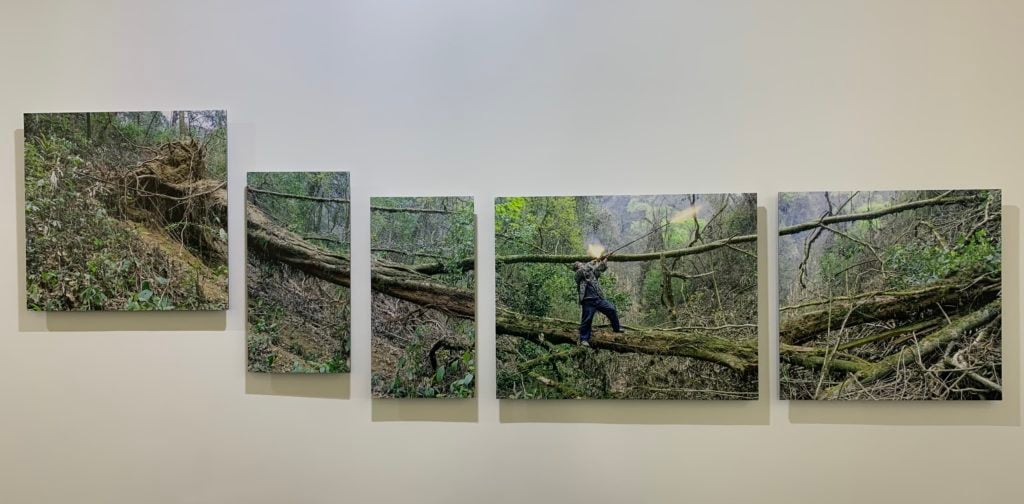
In 2013, Cheng Xinhao earned a PhD in chemistry from Peking University, but he hasn’t really done much with it. Instead, he has largely remained focused on his ongoing 15-year photographic research project into the Hmong people of Western China, an indigenous population that can trace its roots back to before the country’s ancient birth. Mercilessly persecuted during the Qing Dynasty, where they were targeted for genocide, they do not occupy their own branch in China’s 56 acknowledged ethnic groups but are instead categorized under the one known as the Miao (or “savage”).
Today, around 700 live in the country—the rest, around 4,000, live in Vietnam. They subsist mainly off of hunting and gathering in the forested mountains, and in a strange twist, they are among the only people in China allowed to own guns, an antique kind of self-made flintlock rifle that they once used against French colonists in Indochina but which they now use for hunting. As part of his research project, Cheng Xinhao spends days following members of the Hmong as they go on long hunts and other activities, including the subject of this photo, who he also once documented as he went to work for a stint in a Shenzhen factory.
Wang Ling
One Kilometer (2009)
Gaotai Gallery – Xinjiang
Price: $2,256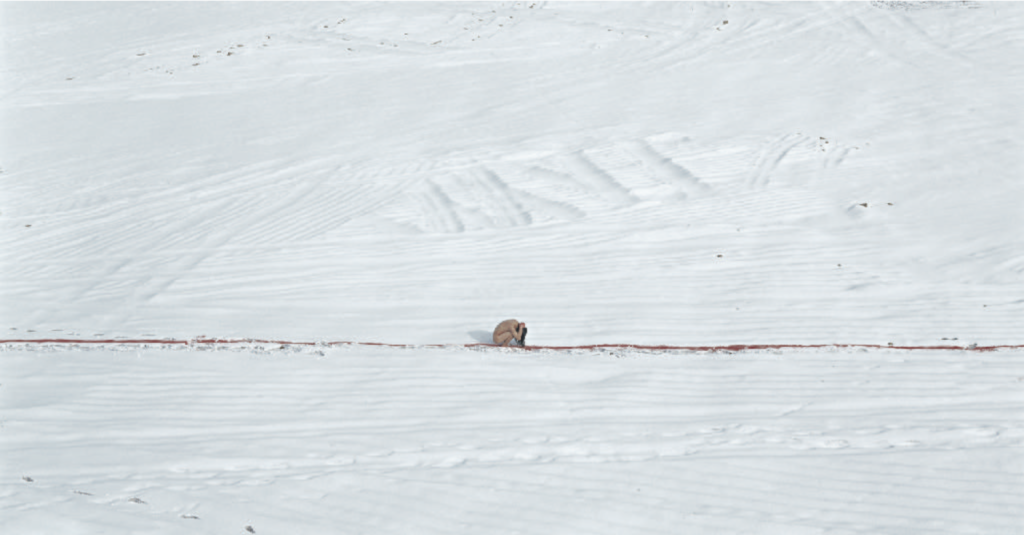
Born in the Hebei province circling Beijing, the photographer Wang Ling today splits his time between the Songzhuang artist village in China’s capital city—which is the country’s artistic as well as political nucleus—and the far-western Xinjiang province, where he attended art school. In this performative photographic series, where he uses red powder to demarcate a one-kilometer-long line in the snow, the artist is signifying a spiritual dividing line between the two places, one of them signifying government rule and the other, Xinjiang, signifying a vibrant mixture of religious life picked up across its frontier borders, from Tibetan Buddhism from the south to the Islam practiced by the Uyghur people. (The region is also known as the Xinjiang Uyghur Autonomous Region.)
Brought to the fair by Gaotai Gallery, a brand-new contemporary-art incubator that is the first gallery of its kind to be based in Xinjiang, Wang Ling has also made significant work chronicling the fraught situation of the Uyghurs, who in recent years have been the target of a comprehensive Mandarin re-education campaign by the Chinese government, which has banned the Uyghur language and is cracking down on the culture generally, in part due out of fear that it could give birth to the kind of militant Islamic groups that are roiling the Middle East.
Leila Alaoui
“Portraiture series” (2010–14)
Galleria Continua – Beijing, San Gimignano, Les Moulins, Havana
Price: $50,000 apiece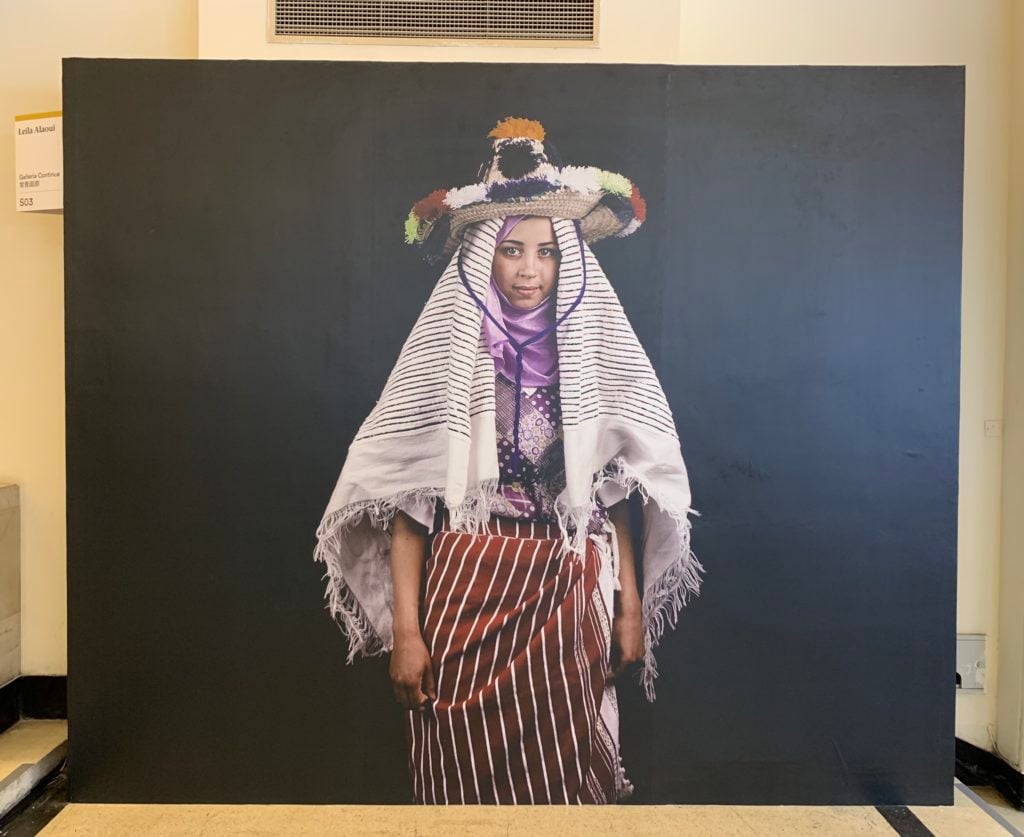
Between the years of 2010 and 2014, the French-Moroccan photographer Leila Alaoui set up a simple studio—basically a backdrop of black cloth—in the center of a souk in her hometown of Marrakech and persuaded passersby to sit down, relax, chat, and then have their portrait taken. Inspired by Robert Frank’s “Americans” series, which documented postwar society in the US, Alaoui set out to record the thrilling diversity of Morocco, bringing to light its many narratives of cultural identity—and historical displacement—through the dress and appearance of her remarkably charismatic sitters.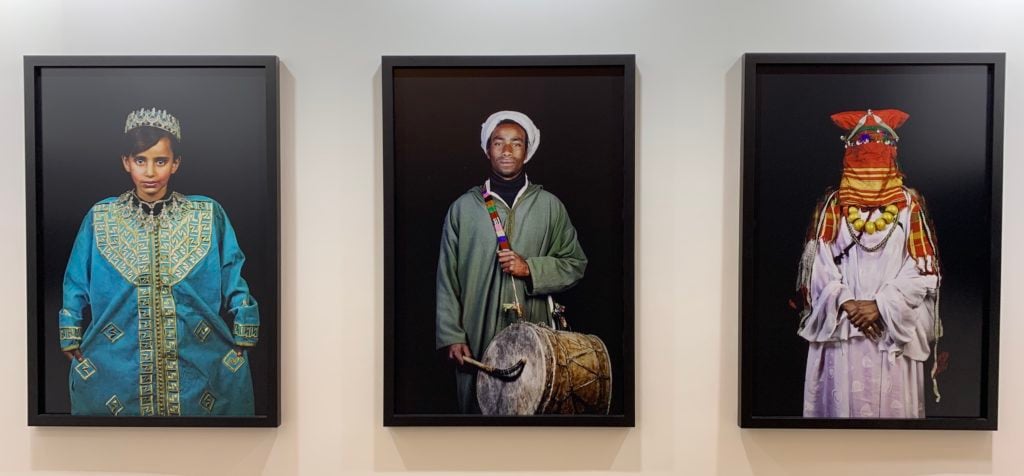
Tragically, Alaoui’s work was cut short in 2016, when, at the age of 33, she was killed when a terrorist opened fire on a cafe in Ouagadougou, Burkina Faso, as she was inside. That year, the 6th Marrakech Biennale was dedicated in her honor, and today, her family operates the Leila Alaoui Foundation to promote her values and her artistic work, which is in the collection of the Qatar Museum.
Long Chin-san
A Lakeside View in the Fall (1939); Deer in Forest (1956)
M Art Center – Shanghai
Price: Not for sale, but roughly $30,000 to $50,000 apiece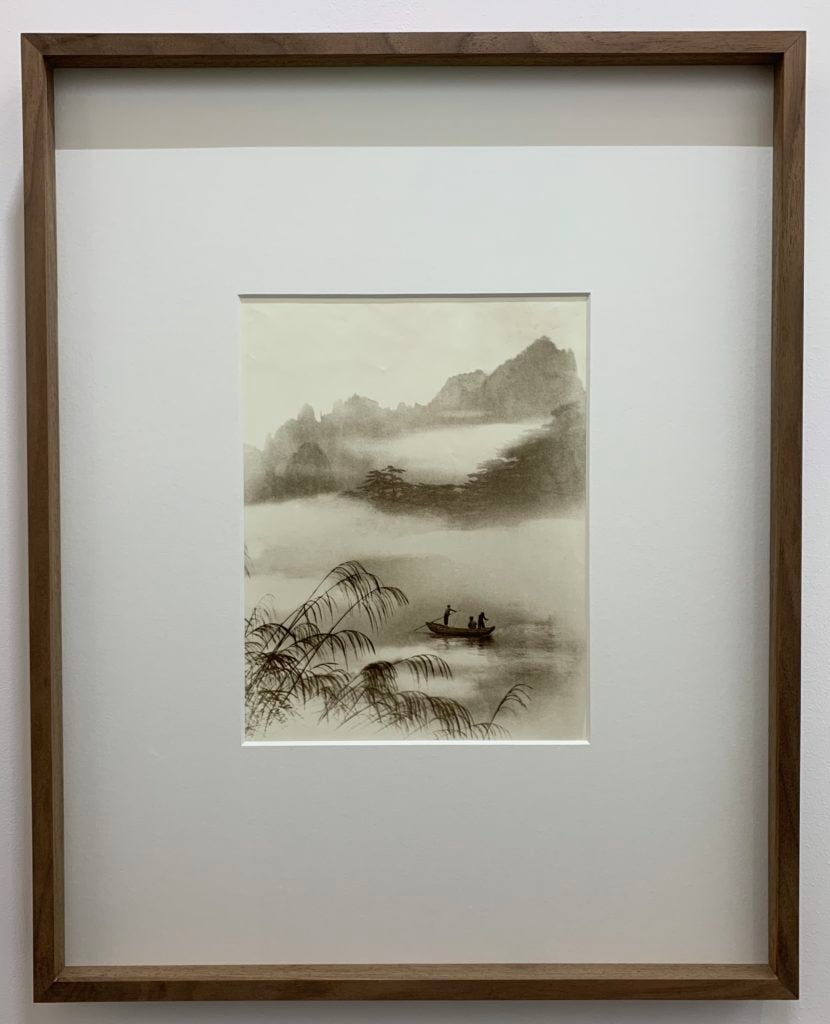
Sometimes known as the “father of Asian photography,” Long Chin-san (also written Lang Jingshan) was a pioneering figure who brilliantly combined the novel Western tool of the camera with traditional Chinese visual idioms. Born in 1892, he became one of the country’s first photojournalists, working for the Eastern Times, and went on to break new ground in art, taking what is considered the earliest surviving Chinese nude photograph in 1928, a portrait of a woman recumbent on a divan titled Meditation.
More significantly, Long Chin-san is known for his modernist approach to fusing Eastern and Western aesthetic styles. Through darkroom practices, he overlaps multiple photographs in one print to create images reminiscent of classical Chinese painting that he often embellishes further by drawing additional scenery in ink. At the fair, one image featuring a Disney-esque landscape populated by spotted Bambis was the product of 18 separate darkroom alterations.
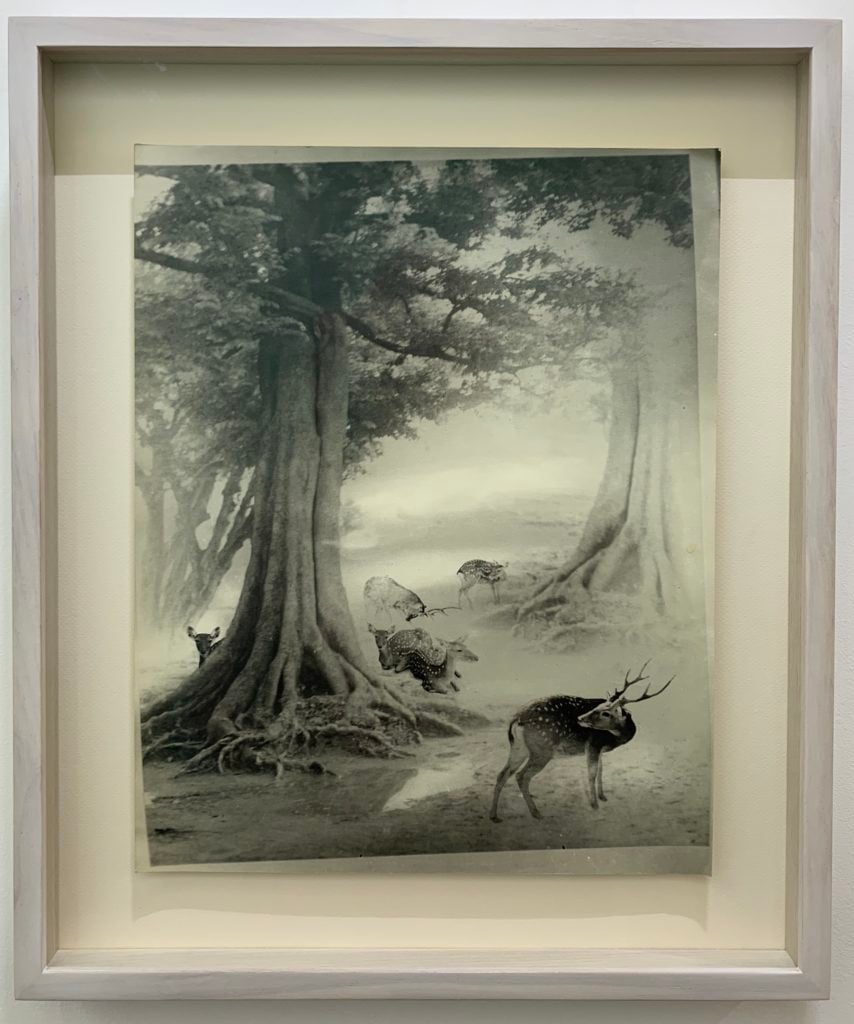
A photographer who met and was influenced by Picasso, Long Chin-san is widely acknowledged as a major figure in 20th century Chinese art history, but he remains undervalued in the art market—primarily because he fled to Taiwan in 1949 during the Sino-Japanese war, thus becoming overlooked by Chinese collectors. Today, his record for a single lot at auction is $105,000, hammered at Sotheby’s Hong Kong in 2017 for a collaborative photographic work with the legendary painter Zhang Daqian.
Jin Yongquan
Nuo (1995)
Nine Art Space – Shanghai
Price: $4,230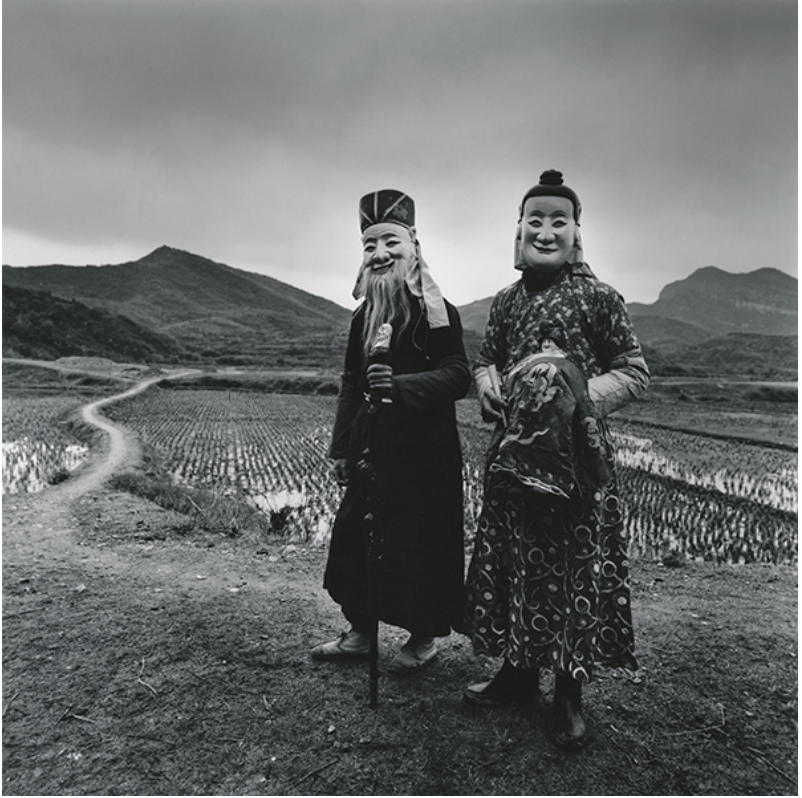
A classic image by the photojournalist and writer Jin Yongquan, this photograph shows prominent villagers from Shiyou, in the Jiangxi province, who were chosen to enact male and female Nuo gods in an ancient dance ceremony believed to promote heath, happiness, and good fortune. Taken nearly a quarter century ago by one of China’s leading photographers of the time, it documents a facet of traditional Chinese culture that has since vanished, a casualty of the country’s headlong rush into modernity.
Xiomara Bender
Pyongyang 2018 | Glorious Country (2018)
OstLicht Gallery – Vienna
Price: $6,600, but offered for $5,000 in the fair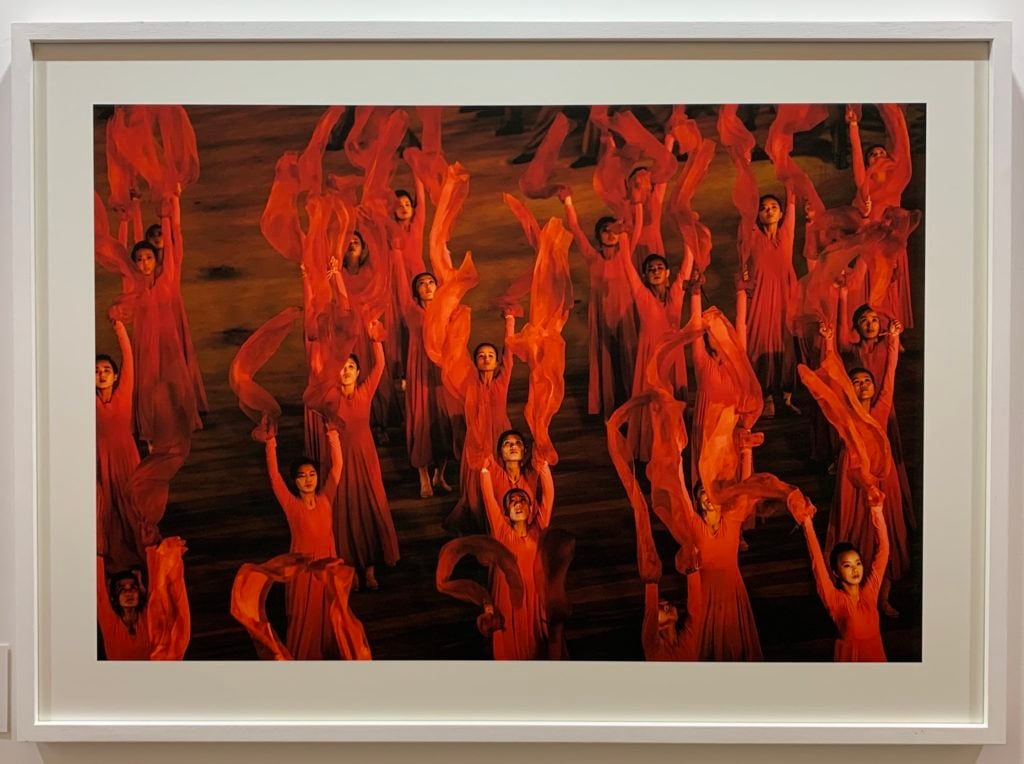
The 30-year-old German photographer Xiomara Bender is well-known in North Korea—her father, the head of a travel agency specializing in exotic locales, had spent 30 years visiting the hermetic dictatorship neighboring China, and she has been there herself 10 times. In 2018, she went on a photographic expedition to the country with her dealer, OstLicht Gallery founder Peter Coeln, in tow. They hoped to pay a visit to one of the so-called “mass gymnastics” performances in Pyongyang’s May Day Stadium. The largest stadium in the world, it has capacity for 114,000 people, of whom an astonishing 90,000 are made up of the performers—who stage precisely choreographed pageantry—while the rest are North Korea’s elite.
One day, Kim Jong-un proved unable to attend the spectacle, so authorities auctioned off his two tickets for €800 apiece, and Bender and Coeln snapped them up. (However, they were prevented from taking photos, so this picture was captured on a different visit.) According to Coeln, the event was immensely impressive—until he paid a visit to the training camps where kindergarteners are drilled in the dance moves with military rigor, at which point it became immensely depressing.
Also in the fair, this photograph by Bender calls back, once again, to Robert Frank—and the emotional story it tells cuts to the heart.
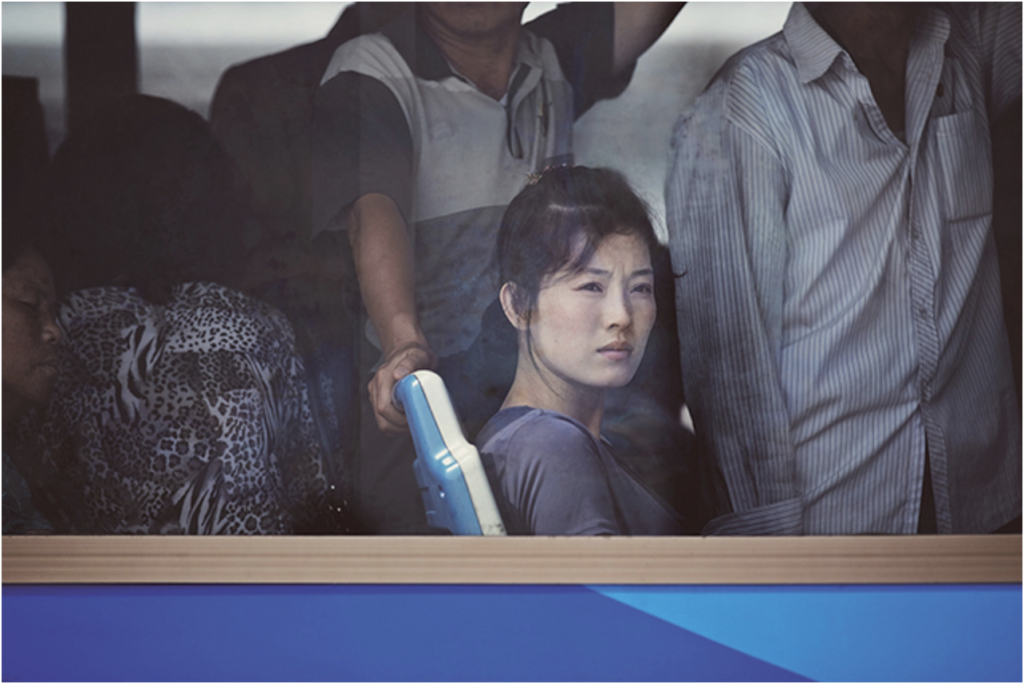
Xiomara Bender, Pyongang 2015 | Kim Il-sung Square, 2015
